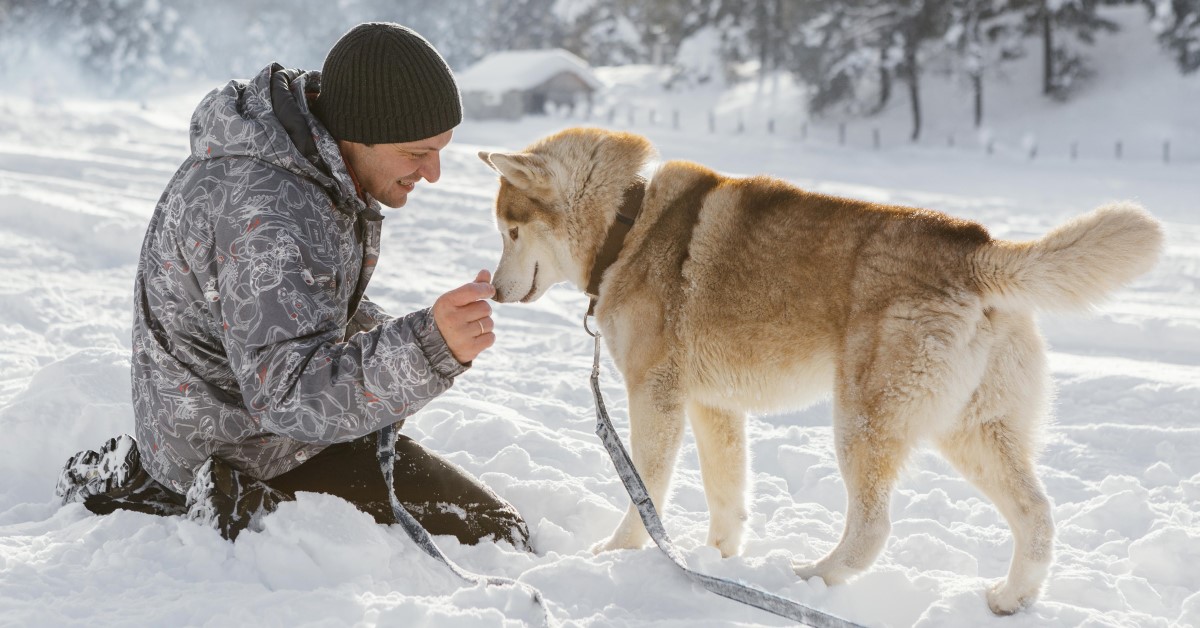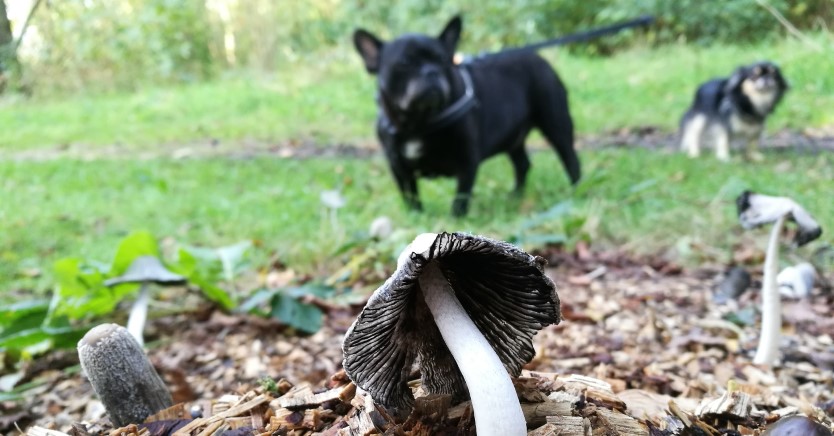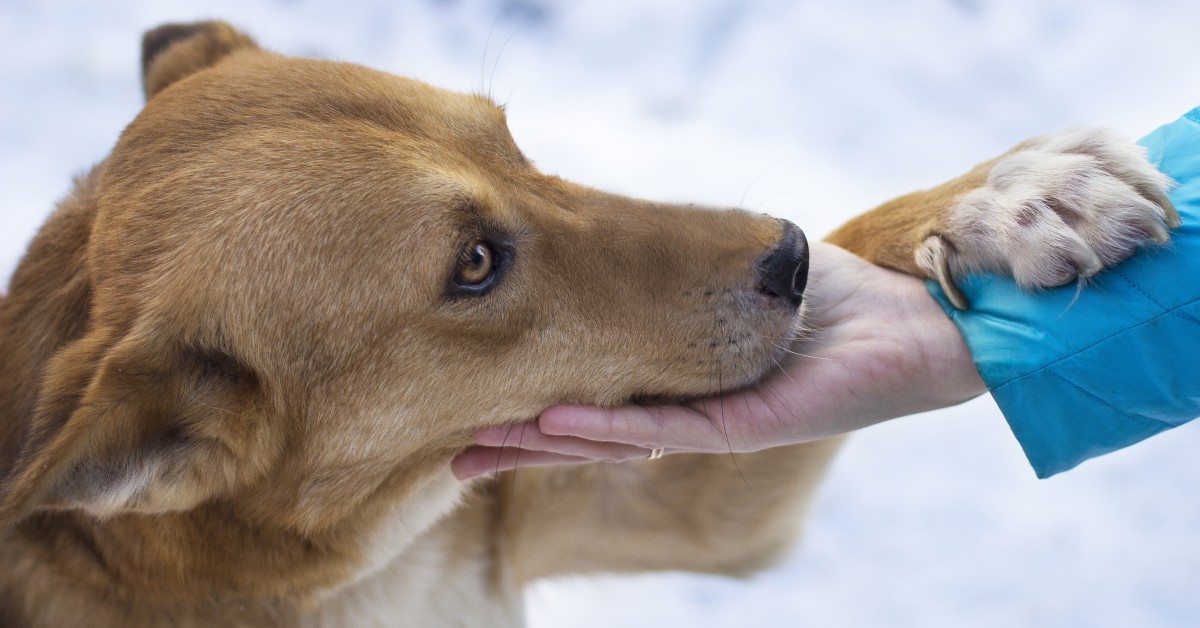How Long Can Dogs Stay Outside in the Snow
Keep your dog safe this winter season by limiting time outside in the snow and cold.

Many dogs enjoy frolicking in the snow, especially those with long, thick coats. However, extended exposure to cold temperatures and snowy conditions could pose a health hazard to your pet. If you live in an area that gets snow, it’s important to understand how long you can keep your dog outside safely and what to do if you suspect that your dog is experiencing signs of frostbite, hypothermia, or other winter weather illnesses.
How Cold Is Too Cold for Your Dog?
There is no one-size-fits-all answer to this question. However, as a general rule of thumb, most dogs will begin to get uncomfortable at 45°F. Once the temperature drops to 32°F, dogs with short hair, small dogs, and dogs that are young, old, or sick should not be left outside long. Dogs that are outdoors in temperatures of 20°F or below are at risk of developing frostbite or hypothermia.
How long a dog can stay outside in the snow has many variables, such as the size, breed, and overall health of the dog. Some dogs can tolerate cold temperatures better than others due to their thick fur or double coats.
Use good judgment based on your pet’s particular needs. On average, a dog should not be outdoors in 30 to 35°F weather for longer than 30 to 45 minutes. If it is only 10°F, keep outdoor time limited to just 5 to 10 minutes. How well your dog is bundled up and the activity level will also make a difference. Dogs can generate heat better when walking or running compared to standing in the yard.
Which Dog Breeds Can Handle Snow? Which Can’t?
Some dogs handle frigid temperatures well and can safely spend hours outdoors participating in winter activities. Some of the best “snow” dogs include:
- Bernese Mountain Dog
- German Shorthaired Pointer
- Newfoundland
- Beagle
- Chesapeake Bay Retriever
- Siberian Husky
- American Eskimo
- Alaskan Malamute
- Labrador Retriever
Other dogs simply don’t enjoy being cold and will likely not want to spend too much time in the snow. Some dog breeds that can’t handle the snow include:
- Yorkshire Terrier
- Great Dane
- Boxer
- Shih Tzu
- Havanese
- Boston Terrier
- Vizsla
- Chihuahua
- Weimaraner
- Papillon
- Dalmatian
- Whippet
- German Pinscher
Signs of Frostbite and Hypothermia in Dogs
Too much time spent out in the snow could result in frostbite or hypothermia. It’s important to recognize the early signs and symptoms of these cold weather illnesses before they progress.
Frostbite can develop in dogs in temperatures of 32°F or below. When a dog becomes too cold, the body reacts by reducing blood flow to non-essential organs, such as the limbs. Without proper blood flow, the skin can freeze, resulting in frostbite. In dogs, the most vulnerable areas include the ears, noses, paws, and tails.
Hypothermia can develop when a dog’s core temperature falls dangerously low. Normal body temperature in a dog is between 100.5 and 102.5°F. The first stage of hypothermia can develop when the body temperature drops down to 99°F. Whether hypothermia is considered mild, moderate, or severe, it should always be treated like an emergency and handled promptly.
How to Keep Dogs Safe in the Snow and Cold
If your dog will spend time outdoors this winter, you’ll want to prepare for cold temperatures. Start by bringing your dog to the vet for a winter wellness exam. Ensure that no known medical conditions have worsened and that your pet is otherwise healthy.
Dog Grooming
Keep up on your dog’s grooming. Trim the hair between your pet’s paw pads to prevent ice from accumulating. You’ll also want to check your pet’s paws each time it comes indoors to look for cold-weather injuries, such as cracked or bleeding paws. If your dog goes anywhere that has de-icing agents, be sure to wash down their belly, legs, and feet when they come indoors.
Dog Sweaters and Winter Gear
Dogs that spend extended time outside can benefit from wearing dog clothes. This can be a warm coat or thick dog sweater that helps keep the core warm and protected. Dog booties can also help prevent injury to your dog’s feet and paw pads when walking on snow and ice.
Warm Shelter
Finally, your dog should always have access to a warm shelter. If it’s too cold outside, simply keep your dog inside with the exception of regular bathroom breaks. If you’re traveling outside, allow your dog to warm up in the car or another location out of the wind and cold. As a general rule of thumb, if you think it’s too cold outside for you, then it’s probably too cold for your pet.
There is always a chance that your dog could get away while outdoors. If your dog becomes lost in the snow and cold, their life could be at stake. Ensure that your dog has a well-fitting collar with an up-to-date ID tag. Microchip your pet to make it easier for its rescuer to find you.
Wrapping Up: Keeping Your Dog Safe in the Snow
While most dogs can play safely in the snow, it’s important to know your pet’s limits. By minimizing the time that your dog spends outdoors, you can help keep your pet safe, happy, and healthy throughout the winter months.
Ready to start saving money on pet wellness care?
Then take a look at Mint Wellness, the pet wellness plan that provides fast reimbursement on routine pet care. Save on vaccinations, wellness exams, preventatives, dental, and more!
Learn More


